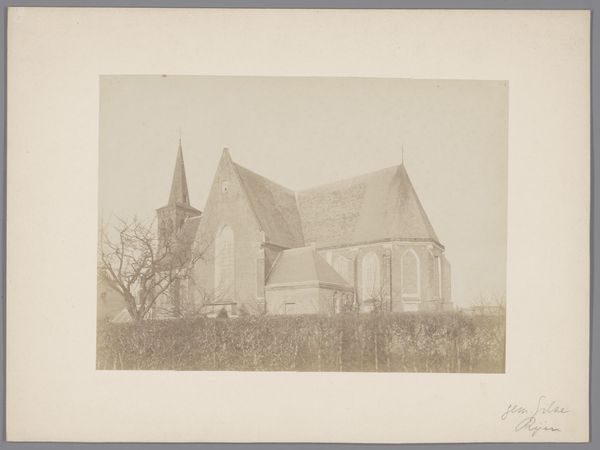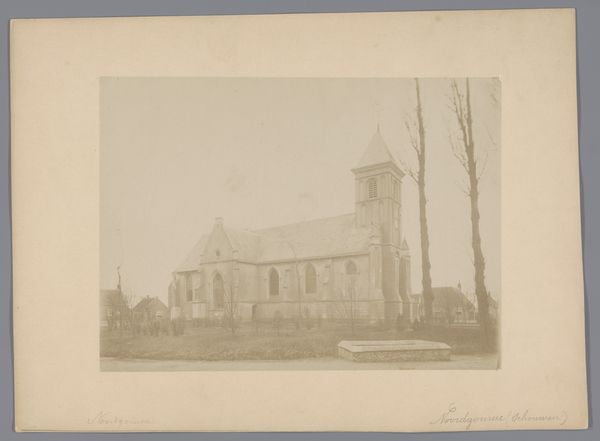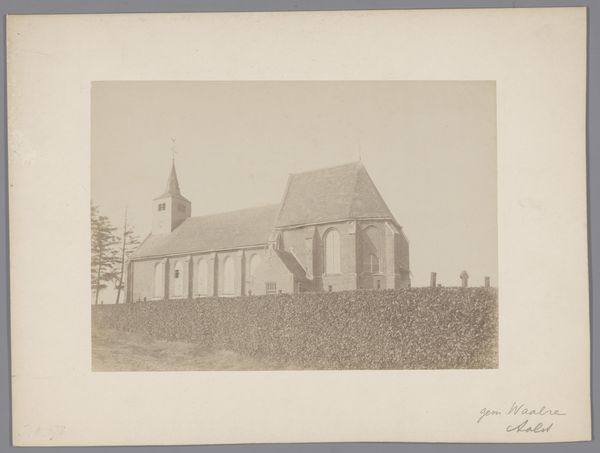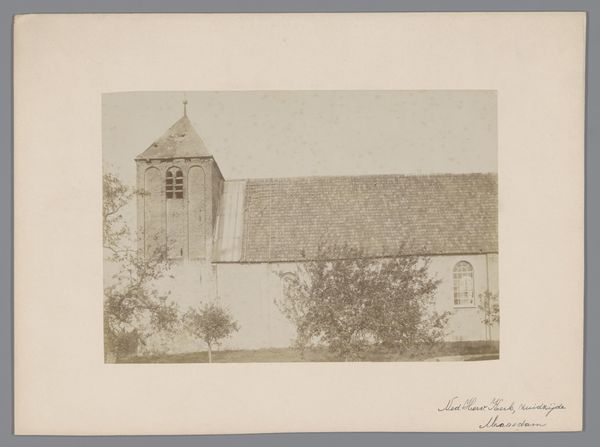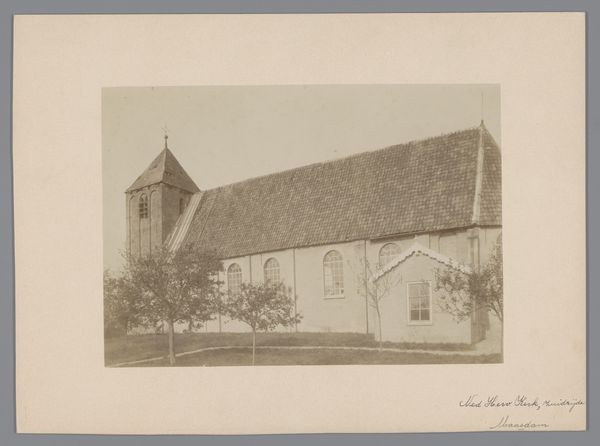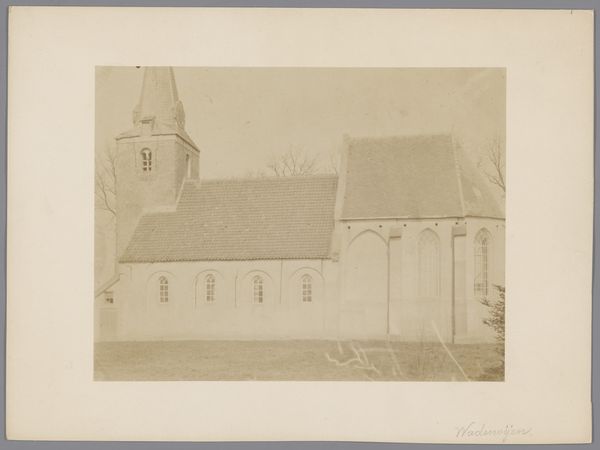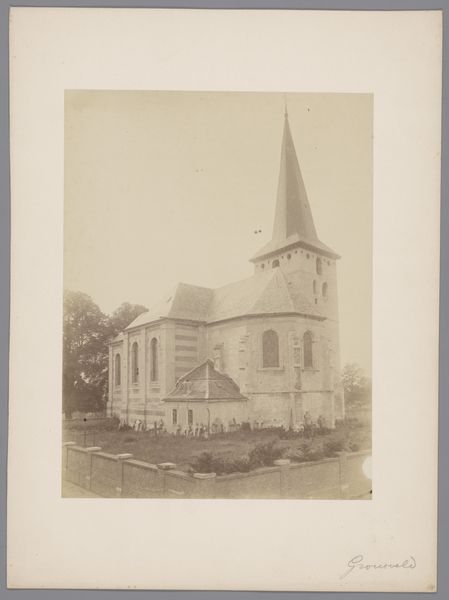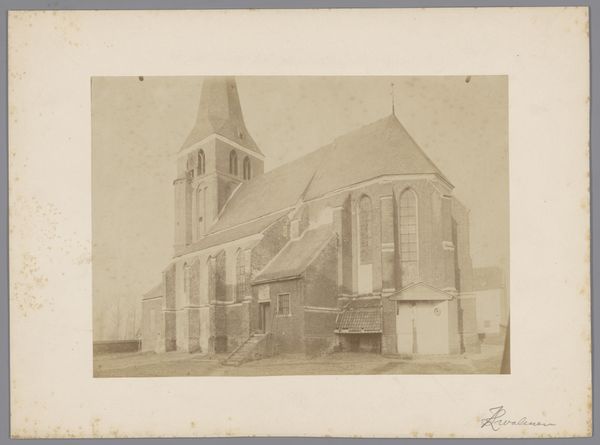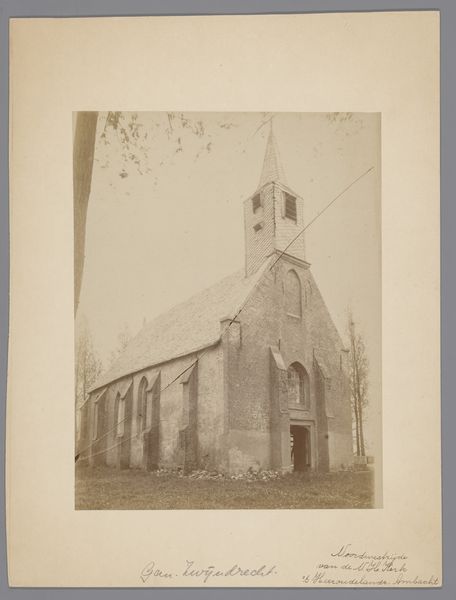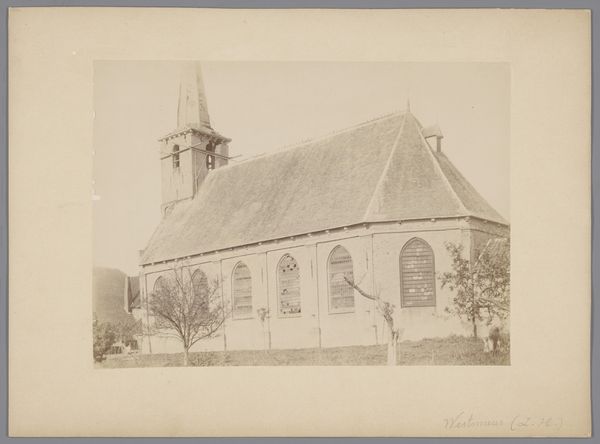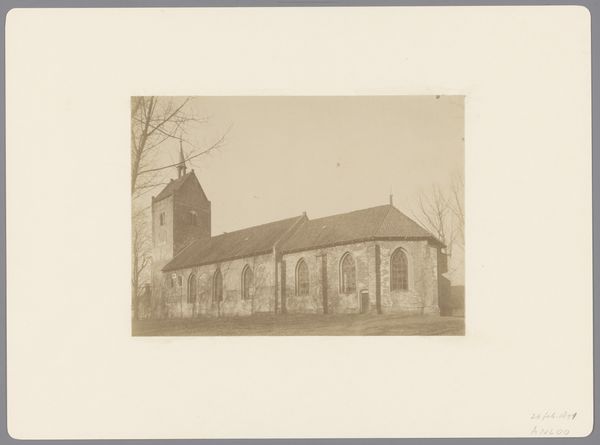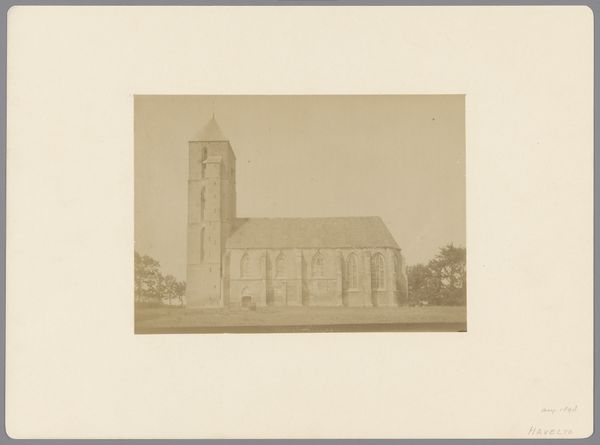
Dimensions: height 357 mm, width 427 mm
Copyright: Rijks Museum: Open Domain
Curator: Standing before us is “Gezicht op kerk te Emmen,” or “View of the Church at Emmen,” an engraving created in 1855 by Isaac Reijnders Sz. The rendering possesses a muted, almost ghostly quality. What catches your eye? Editor: Immediately, it's the solitude, the almost unbearable quiet emanating from it. That pale sky seems to swallow everything whole. It feels… hauntingly peaceful? Like a memory fading. Curator: Yes, there is a strong Romantic sensibility to it, isn’t there? Reijnders was working within a time that idealized the landscape as a mirror for inner emotion. It makes me think about how power, especially religious authority, visually presents itself in rural spaces. This church isn't just a building; it's a statement. Editor: Absolutely. Look at the spire—it pierces the sky, a very deliberate symbol of dominance, particularly when you consider the lives lived in its shadow during that era. I find myself wondering about the untold stories, the silent histories embedded in those stones, and who was excluded or marginalized within those very walls. It looks more like a somber monument rather than a place for uplifting community gathering. Curator: The landscape seems intentionally neutral, not quite inviting, a strategic decision, I suspect, designed to focus attention on the church's form and its connection to the sky above it. Do you see the lone tree to the left? I imagine it acts as witness of many changes this Church went through across decades. Editor: Definitely, it’s placed so strategically, drawing attention to the building while subtly reminding us of time and mortality. It highlights not just the physical space but also the societal weight of religious institutions within a community, doesn’t it? You start thinking about tradition, obedience, and maybe even dissent brewing underneath the surface of this tranquil facade. Curator: This muted palette gives the print a sort of timeless quality. But look closer—the detailed engraving captures nuances, like the individual roof tiles and the textures of the stone. And, what about the light? It doesn't flatter, doesn't dramatize. Editor: Which actually reinforces the artist’s commentary on social hierarchies! The plain depiction leaves room for interrogation. We aren’t presented with something conventionally beautiful to be admired without critique. It prompts us to ask harder questions about representation and who or what is considered worth immortalizing. Curator: A sober point, and ultimately why looking at art like this keeps me searching for resonance even through silence. Editor: Absolutely. And keeps me pushing to understand whose voices we aren't hearing.
Comments
No comments
Be the first to comment and join the conversation on the ultimate creative platform.
